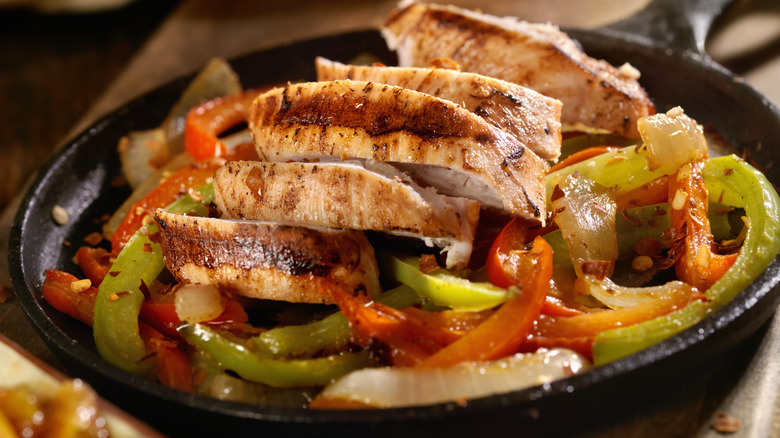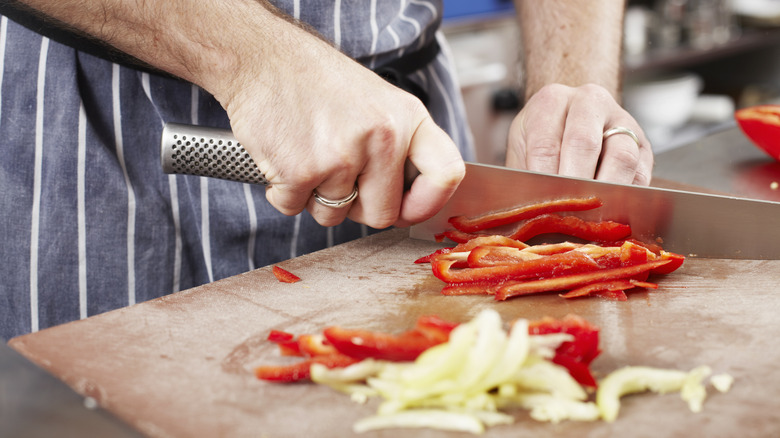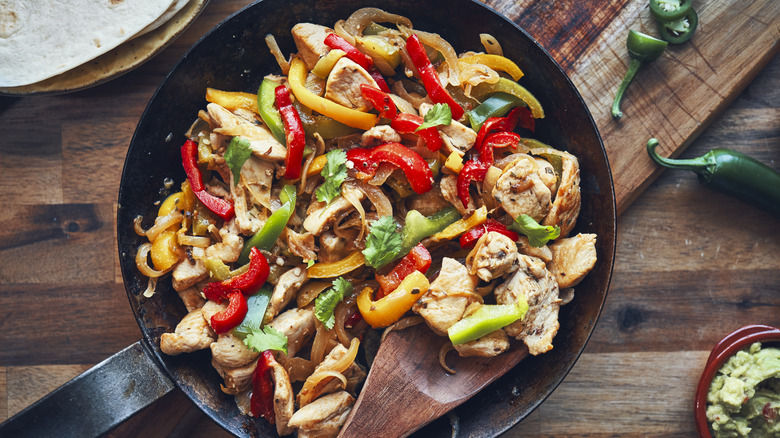The Best Method Of Cutting Bell Peppers For Fajitas
Bell peppers are a cornerstone ingredient in fajitas, providing crunch, sweetness, and a burst of color. Whether you plan on making the ultimate chicken fajita or steak fajitas, cutting your bell peppers properly enhances not only their flavor but also their texture. The ideal cut for fajitas is a julienne or "matchstick" cut, which ensures the peppers are thin enough to soften slightly while retaining a satisfying crunch. This method involves slicing the pepper into long, thin strips that are uniform in size, promoting even cooking and a perfect bite in every fajita wrap.
To achieve this, start by topping and tailing the bell pepper to remove the stem and base. Slice the pepper in half from top to bottom, and then remove the seeds and white pith, as these can be bitter. Placing the pepper skin side down on the cutting board, slice it vertically into strips approximately ¼ of an inch wide. This size provides the ideal balance between tenderness and structure, allowing the peppers to cook quickly while holding their shape amidst the other fajita fillings.
Cutting your peppers in this way serve multiple purposes
The way bell peppers are cut not only affects their texture but also how they release and absorb flavors. Julienne-cut peppers have an increased surface area that caramelizes quickly when exposed to high heat. That allows the peppers to undergo the Maillard reaction. The Mallard reaction adds a depth of flavor that complements the savory elements of fajitas. Moreover, the thin strips can be seasoned more uniformly, ensuring each piece is coated with the perfect blend of spices.
When sautéed, these slender strips of bell pepper meld harmoniously with onions and proteins, becoming tender yet maintaining a bit of firmness for a satisfying mouthfeel. The increased amount of surface area also means more opportunities for the peppers to interact with the marinade and cooking oil. In that way, the peppers absorb the aromatic blend of fantastic fajita seasoning. Bell peppers' skin, when sliced thinly, becomes delicately blistered in a hot pan. The blistered skin adds a subtle smokiness that complements the robust flavors of grilled meats or charred vegetables, tying the fajita components together with a smoky undertone.
You should cut your other vegetables this way too
For the ultimate fajita experience, combine your skillfully cut bell peppers with other ingredients to complement their size and shape. Onions, for example, should also be julienned to ensure they cook at a similar rate and integrate seamlessly with the peppers. Careful cutting not only expedites the cooking process but also ensures every bite is infused with the fajitas' signature blend of spices and flavors. When it comes to proteins, slice meats thinly against the grain for tenderness and then marinate them for flavor synergy with the vegetables.
Presentation matters with fajitas and the visual appeal of evenly cut bell peppers cannot be overstated. They should glisten with the fajita seasoning and retain their vibrant color, inviting with their rustic charm. Pair these with perfectly charred strips of chicken, beef, or plant-based proteins. The result is a fajita that's as delightful to look at as it is to devour — a true feast for the senses.


